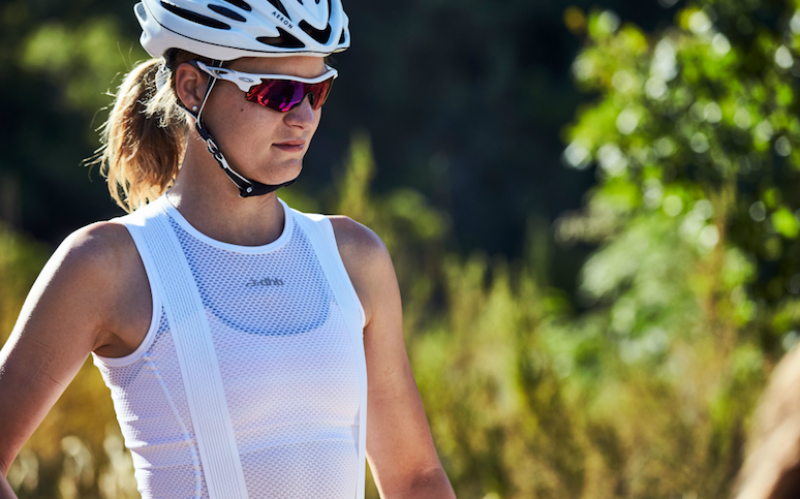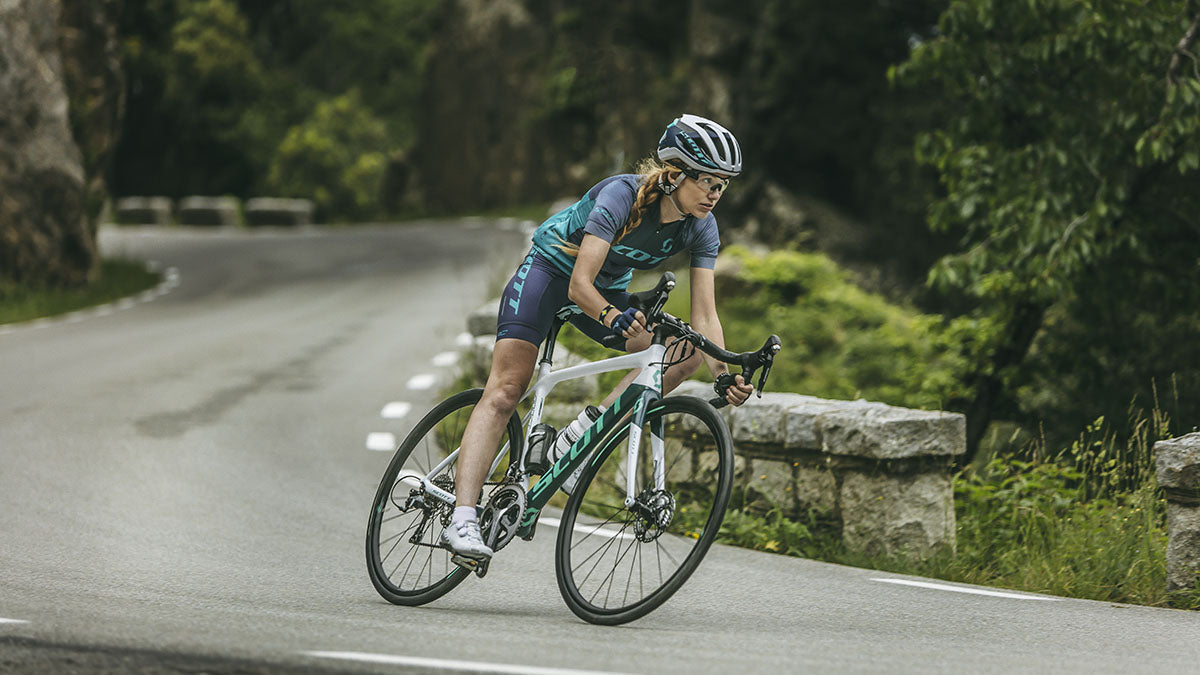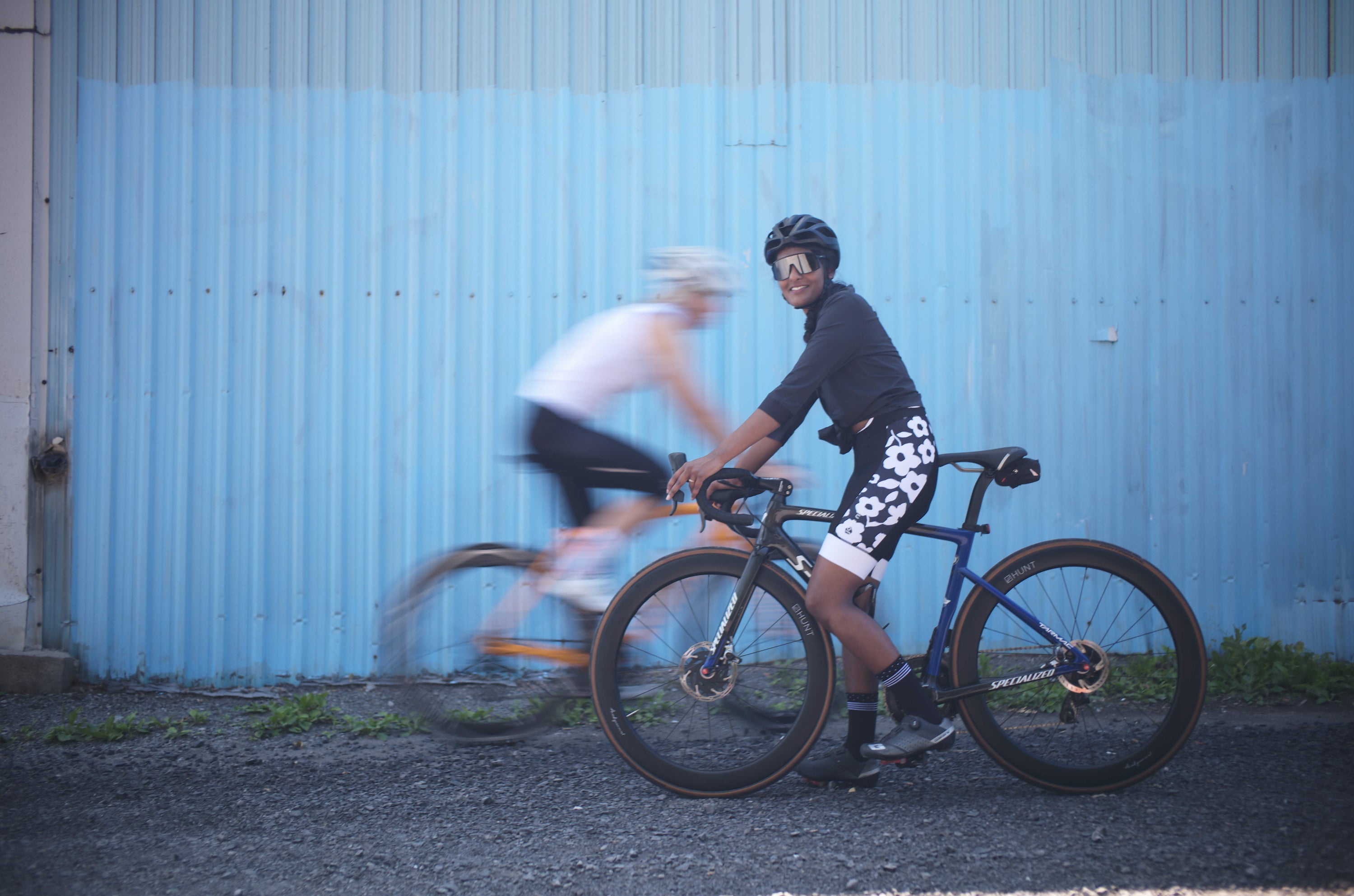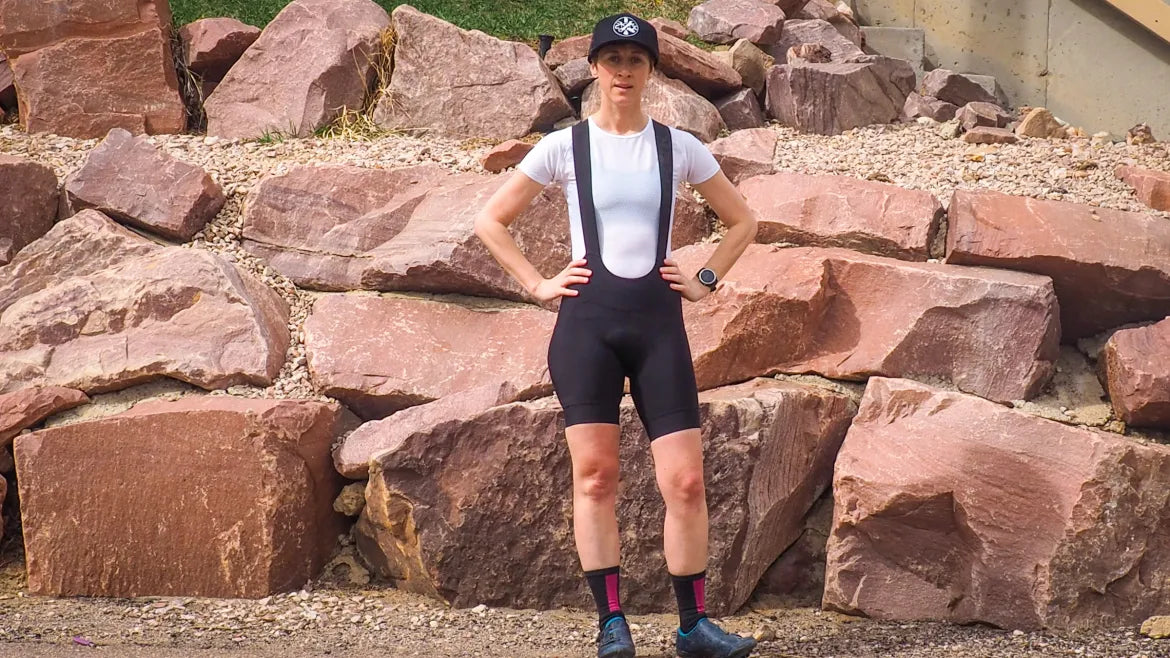Guide to Women's Cycling Base Layers: Ride in Comfort

When it comes to cycling, having the right gear can significantly impact your performance and overall experience. One crucial yet often undervalued component of this gear is the base layer. Serving as the first line of defense against varying weather conditions, the base layer manages body moisture, regulates temperature, and can even contribute to aerodynamics.
However, not all base layers are created equal, especially when considering the unique needs of women cyclists. The ideal base layer strikes a balance between functional design - which includes effective moisture-wicking, thermal control, and a non-restrictive fit - and comfort.
Understanding the Concept of Base Layers
Base layers are an integral part of any cyclist's wardrobe. They're the first layer of clothing that comes into contact with your skin, acting as a second skin. The primary role of base layers is to regulate body temperature and manage moisture by wicking sweat away from the skin. This function keeps you dry, comfortable, and less prone to chills or overheating, thereby enhancing your cycling performance.

A well-chosen base layer can also reduce friction between your body and outer clothing layers, preventing chafing and irritation. Moreover, some base layers come with additional features like UV protection and antibacterial properties, providing extra benefits to cyclists.
Factors to Consider When Choosing Base Layers for Cycling
When selecting a base layer for cycling, keep the following factors in mind:
- Material: The fabric of your base layer significantly affects its performance. Choose a material that suits your needs, considering factors like breathability, moisture-wicking ability, and durability.
- Fit: The base layer should fit snugly but not restrict movement. A loose base layer won't provide adequate moisture management, while a too-tight one might be uncomfortable.
- Breathability and Moisture Management: Look for a base layer that effectively wicks sweat away from your skin, keeping you dry and comfortable.
- Seasonal Suitability: Your choice of base layer should correspond to the weather conditions. Lighter materials are ideal for warm weather, while thicker, insulating fabrics are best for colder climates.
Top Base Layer Materials for Cycling

Merino Wool
Benefits: Merino wool is renowned for its superior breathability and moisture-wicking abilities. It also has excellent thermal regulation properties, keeping you warm in cold conditions and cool in hot ones. Additionally, it's naturally antibacterial, reducing odour build-up.
Drawbacks: Despite its benefits, merino wool can be more expensive than synthetic materials. It's also less durable and may require more careful washing.
Synthetic Materials (Polyester, Polypropylene)
Benefits: Synthetic materials are highly durable and often more affordable than natural fibers like merino wool. They excel in wicking moisture away from the skin and dry quickly.
Drawbacks: Synthetic materials may not regulate temperature as effectively as merino wool. They can also retain odours if not treated with an antibacterial finish.
Blends (Merino Wool and Synthetics)
Benefits: Blends combine the best of both worlds. They offer the thermal regulation and odour resistance of merino wool with the durability and affordability of synthetic materials.
Drawbacks: The performance of blended base layers depends on the ratio of the materials used. Some may not offer the same level of breathability or moisture-wicking as pure merino or synthetic base layers.
Review of the Best Base Layers for Cycling
1. Jolie Ride Long Sleeves Base Layer
For cycling enthusiasts and winter sports adventurers, the Jolieride Long Sleeves Base Layer is a must-have for your outdoor gear collection. Designed to cater to the needs of women in sports, this top base layer is crafted from an ultra-light and quick-dry fabric, ensuring you stay comfortable and dry throughout your activities. Its snug fit contours gracefully to the body, providing a seamless feel under additional layers.

The temperature-regulating feature of this base layer makes it exceptionally versatile, adapting effortlessly to both cold and hot weather conditions. Whether you're road cycling, mountain biking, or engaging in winter sports, this base layer serves as your essential undergarment. Beyond its functional benefits, the Jolieride Long Sleeves Base Layer also brings an element of style to your sporting attire, blending seamlessly with your existing wardrobe.
2. Castelli Prosecco R Short Sleeve
Castelli Prosecco R Short Sleeve base layer offers a perfect blend of style, comfort, and functionality. Its Prosecco hydrophilic treatment spreads the moisture out over a larger area for rapid evaporation, keeping you dry and comfortable during your ride. The short sleeves and stretchy mesh fabric offer excellent ventilation, making it ideal for summer rides. Additionally, its seamless construction reduces chafing, enhancing your cycling experience.

The design is sleek and body-hugging, ensuring a perfect fit under your jersey. This base layer is lightweight, and its cut is tailored to fit the riding position, so it doesn't bunch up. Moreover, Castelli's reputation for quality is evident in the Prosecco R Short Sleeve base layer, making it a reliable choice for any cyclist.
3. Craft Active Extreme 2.0
The Craft Active Extreme 2.0 base layer stands out for its innovative design and high performance. It features CoolMax Air, a proprietary fiber that provides superior moisture management and breathability, keeping you dry and cool during intense cycling sessions. Its thin, lightweight fabric and ergonomic fit make it feel like a second skin.

This base layer also incorporates Craft’s Windstopper panels on the chest and shoulders, protecting you from the cold wind while cycling. The Active Extreme 2.0 has flatlock seams that prevent chafing, enhancing your comfort. With its technology-driven design and excellent thermal regulation, it is an ideal base layer for cycling in varying weather conditions.
4. Rapha Merino Base Layer
Rapha’s Merino Base Layer is a luxury pick for women cyclists. Made from 100% merino wool, it offers unparalleled softness, breathability, and thermal regulation. The natural fibers wick moisture away, keeping you dry, while the insulating properties keep you warm when it's cold and cool when it's hot.

This base layer is lightweight and has a close fit, making it comfortable for long rides. The cut is longer at the back to provide full coverage when riding. Despite its luxurious feel, Rapha’s Merino Base Layer is highly durable and maintains its shape even after multiple washes. It's a premium choice for cyclists who value comfort and style in their gear.
5. Pearl Izumi Women's Transfer Cycling Sleeveless Baselayer
The Pearl Izumi Women's Transfer Cycling Sleeveless Baselayer is a top-notch cycling base layer designed with the needs of active cyclists in mind. It features Pearl Izumi's innovative P.R.O. Transfer Dry fabric, which wicks away sweat rapidly, keeping you dry and comfortable during intense rides. Its sleeveless design and full mesh construction allow for excellent breathability, making it ideal for warm weather conditions.

This base layer also boasts a cycling-specific fit that follows the contours of your body without being too tight. The drop tail design ensures coverage while in the riding position. With its high-performance fabric and thoughtful design, the Pearl Izumi Women's Transfer Cycling Sleeveless Baselayer is a great addition to any cyclist's wardrobe.
6. Gore Wear Women's Base Layer Thermo Long Sleeve Shirt
For those seeking superior warmth during chilly rides, the Gore Wear Women's Base Layer Thermo Long Sleeve Shirt is a standout choice. This base layer is made from a blend of polypropylene and polyester, providing excellent insulation and moisture-wicking properties. It's designed to keep you warm and dry even during high-intensity rides in cold weather.

The Gore Wear base layer features minimal seams for a chafe-free experience and a longer cut at the back for optimum coverage while riding. The stretchy fabric allows for unrestricted movement, and the fitted design ensures it fits comfortably under a jersey or jacket. With its focus on thermal insulation and comfort, the Gore Wear Women's Base Layer Thermo Long Sleeve Shirt is a reliable companion for colder weather rides.
Conclusion
Wrapping up, the base layer's role in cycling is undeniable. Key factors such as moisture management, temperature regulation, and comfort are addressed by the different products reviewed in this article, each specifically designed for women cyclists.
It's clear that the right base layer can be a game-changer for your cycling experience. Regardless of whether you cycle in hot or cold weather, there's a product out there tailored to your needs. The ultimate decision should align with your specific requirements, ensuring improved performance and optimal comfort on your rides.
Frequently Asked Questions
Should you wear a base layer cycling?
Yes, wearing a base layer while cycling is advisable, especially in cooler weather. A good base layer helps regulate body temperature, wicks moisture away from the skin, and provides additional insulation. During warmer months, a light, moisture-wicking base layer can help keep you cool and dry.
What is the best material for a cycling base layer?
The best materials for a cycling base layer are typically synthetic fabrics like polyester or natural materials like merino wool. These materials are excellent for moisture management – they wick sweat away from the skin, helping to keep you dry and comfortable. Merino wool has the added benefit of being naturally odor-resistant and regulates temperature well in both hot and cold conditions.
How many layers do you wear cycling?
The number of layers worn while cycling depends on the weather. Typically, three layers are sufficient for cold conditions: a moisture-wicking base layer, an insulating middle layer (like a fleece or thermal jersey), and a protective outer layer that is wind and water-resistant. In warmer conditions, you might only need one or two layers, focusing on moisture management and sun protection.
What is the best base layer for fat biking?
For fat biking, which often occurs in cold, snowy conditions, the best base layer is one that offers excellent thermal insulation and moisture-wicking properties. Merino wool is a popular choice as it provides warmth, is breathable, and wicks away moisture effectively. It also resists odors, which is beneficial for longer rides. Alternatively, a heavyweight synthetic base layer can also be a good option, as it dries quickly and maintains warmth when wet.



